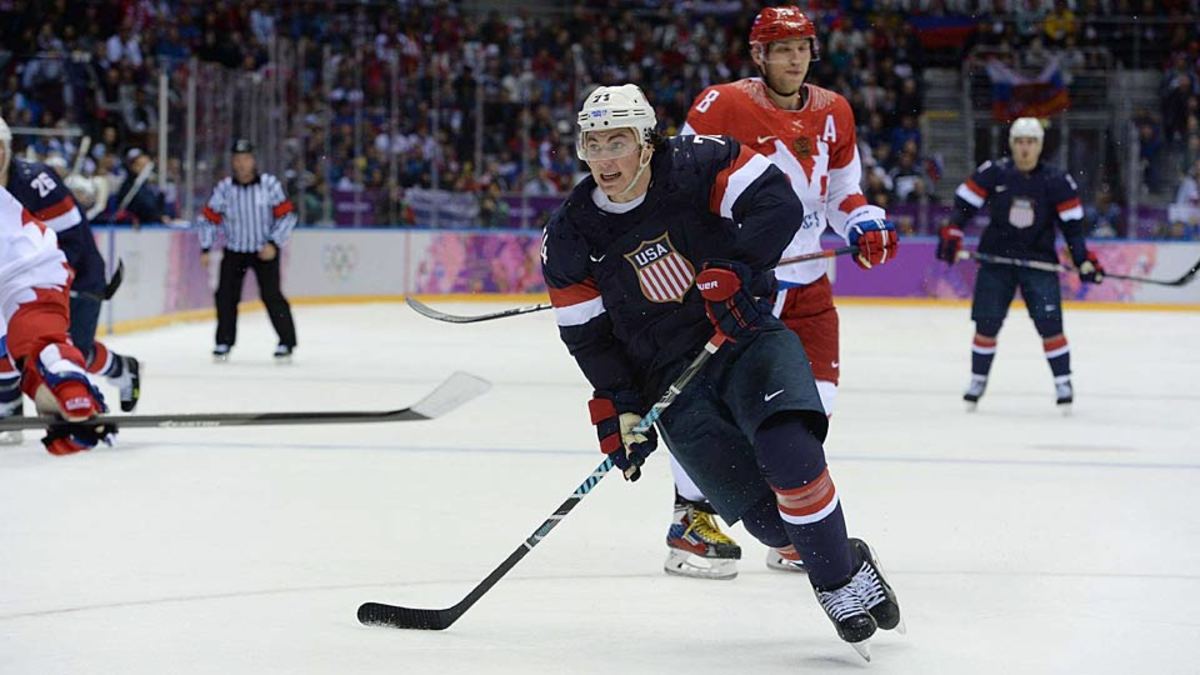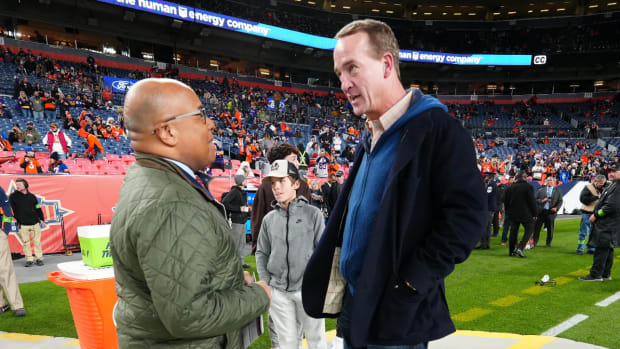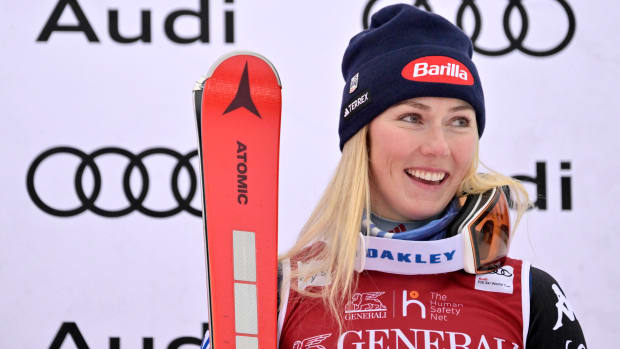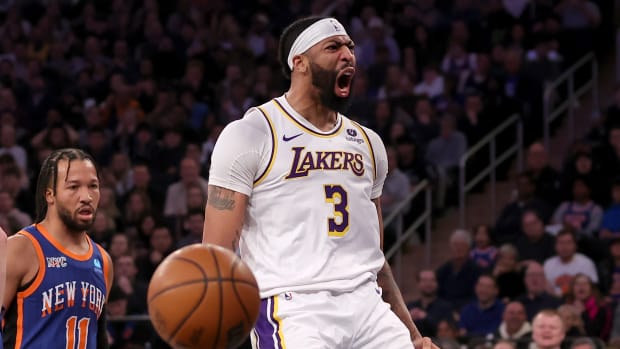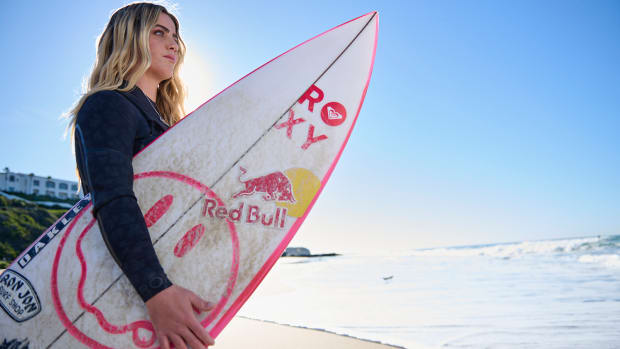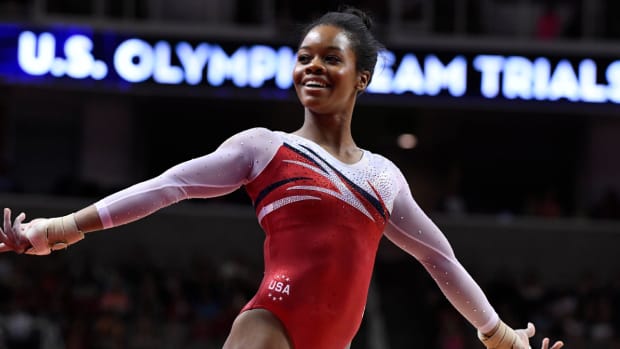Legend of T.J. Sochi born in grand theatre of USA vs. Russia epic
SOCHI – In the back end of their Olympic home-and-home 34 years apart, the United States beat Russia, 3-2, in a shootout.
This was not the best game in Olympic hockey history, but given the pace and the passion, the skill and the will, the pendulum of momentum and the almost tragic-comic ending in which a fourth-line player named T.J. Oshie became T.J. Sochi, it will be downloaded on the hard drive of the mind. Wrenched from their NHL and KHL teams in midseason, told to proudly represent their countries, asked to do something exceptional, these men provided a welcome reminder that when the opponents align – USA vs. Russia - and the circumstances are right, producing a shootout as long as a Russian-novel, five Olympics rings can trump a Stanley Cup ring.
This might have been the most meaningful meaningless game in history, a match that was Olympian in its scope if not its implication. Team USA coach Dan Bylsma finally lit upon “awesome” to describe the 60 minutes of regulation, the five of overtime, and the shootout that thrilled and dawdled; his superlative is as fine as any. But because none of the 12 teams in the Olympic tournament are eliminated after the three-game round robin – they are merely jockeying for a preferential path into the medal rounds – the match will have to serve as its own reward. This is enough. There should be nothing satisfying than revealing yourself on the world stage, whether that was Oshie’s dipping into his bottomless bag of whiz-bang shootout tricks or Pavel Datsyuk’s one-legged virtuosity.
FARBER: Memories of the Miracle on Ice
There were echoes of the first of this home-and-home, Lake Placid 1980, Miracle on Ice, bouncing off the ceiling of Russia's barn, the pristine Bolshoy Arena. The wall of sound jogged the collective American memory. While players who are generations removed from that game might scoff at the notion, the waving flags and chanting fans and presence of shinny-playing President Vladimir Putin in the rink resurrected an ineluctable part of Americana. You knew. And so did they, even if they had been reluctant to admit it. When some overheated players engaged in a scrum about four and a half minutes into the game after a ho-hum glove save by Russian goalie Sergei Bobrovsky – feisty American forward Ryan Callahan was the straw that stirred the stink – all pretext vanished.
This was a work of grand hockey theater at the Bolshoy, crammed with neatly defined roles: the shot blockers (like Ryan Kesler, who, when his hockey career is finished, can rent himself out as a piñata for children’s birthday parties); the acrobats (Bobrovsky and the spectacular Jonathan Quick in the U.S. goal); the antagonists (Dustin Brown and Alexander Radulov); and ultimately the protagonists (Pavel Datsyuk and Oshie).
Where to start?
You start with the astonishing level of top-shelf Russian talent and the seemingly genetic ability of American hockey players to play with barely a blush of ego. They are willing to make the big sacrifices -- Kesler and other Americans flung themselves in front of shots from Alexander Ovechkin and Ilya Kovalchuk -- and more subtle ones. Ryan McDonagh, a left-shot defenseman, has made the transition to the right side in order to partner the backbone of Team USA. Defenseman Ryan Suter played 29:56. Another four ticks, and he would have qualified for Russian citizenship.
Or maybe you turn the world upside down and just gaze at Datsyuk in rapt admiration. He is playing on a bum leg, one that jeopardized his participation in the tournament. When asked about his injury last Tuesday, he said, “What injury?” This is what all hockey players say, but few of them can do what Datsyuk does. He makes every play in every zone, from clearing the puck in the defensive zone to pickpocketing opposing forwards to scoring goals. He scored twice against Team USA, taking a crisp stretch pass from Andrei Markov and skating a clear path through defensemen Brooks Orpik and John Carlson to open the scoring midway through the second period with a bravura breakaway shot to Quick’s glove side that ticked off the post and in. In the third period, Datsyuk scored the tying goal on the power play, through the screened Quick’s pads.
The mere fact of the power play should have unsettled Bylsma, who has the demeanor you would hope for in America’s Coach. Eighteen seconds earlier Dustin Brown, who was exceptional in the team's opening glorified scrimmage against Slovakia, had been called for kneeing, an inexcusable penalty at almost any time and particularly egregious with the Americans holding a late one-goal lead. The penalty was Brown’s second brain cramp of the period. He had already been whistled for interference in the offensive zone, the kind of penalty that has gotten players banished to the gulag. Metaphorically, of course.
But Brown had a Russian doppelganger: Alexander Radulov.
The last time North Americans saw Radulov, well … they would have had to stay up late. He missed a midnight curfew in Phoenix during the 2012 playoffs when he was back briefly with Nashville, the team from which he had bolted earlier in his career. Radulov has had a habit of making sketchy decisions, a dubious list that now includes cross-checking Brown -- defenseman Cam Fowler scored on the ensuing power play after a slick five-foot, cross-crease pass from James van Riemsdyk -- and taking a hooking penalty in the third, which provided Patrick Kane the opportunity to fire the puck horizontally across the ice to Joe Pavelski, who one-timed the second American goal.
Radulov was one key penalty away from the hat trick of dumb.
There were chances for Hockey Afternoon in Russia to finish before the shootout. Russian defenseman Fedor Tyutin’s point drive with less than five minutes remaining was disallowed because the net was off its moorings, and Patrick Kane was foiled five-hole on a breakaway attempt midway through the four-on-four overtime, all of which necessitated a device that has a worse public relations problem than North Korea.
In the NHL, hockey men loathe the shootout. A gimmick. A skills contest. OK. But as the shootout slowly unspooled amid the wondrous cacophony of Bolshoy, it became apparent the issue is not that the NHL has a shootout. The problem is that NHL shootouts are not dramatic enough.
Three times a goal was required to extend the shootout. Three times a player scored, beginning with Kovalchuk after the Russians were down to their final shooter in the regulation portion. If the score is tied after the first three shooters, a coach has the option of using any player as often as he wants. Zinetula Bilyaletdinov, the Russian coach, toggled between Kovalchuk and Datsyuk.
For Team USA, there was only one option. Oshie, who made the team, in part, because of his solo gifts, has more moves than a chess grandmaster. Like the old TV commercial with the French-Canadian goalie-turned-taxi-driver talking about being forced into retirement because he never knew what Mats Sundin would do – “Top shelf, bottom, shelf, stick side …” – Bobrovsky was flummoxed. Oshie would approach the puck casually, look down at it as if he were checking for IIHF president René Fasel’s signature, and then skate slowly towards the crease with an air of inevitability. Oshie’s performance was brilliant yet, oddly, also below average if you do the arithmetic. With the Blues, he has scored on seven of 10 this season, a 70 per cent rate. He batted .667, four for six, against Bobrovsky. (Yes, a small sample size.)
“His moves make me laugh even though I see them time and time again,” says David Backes, the Team USA center who plays with Oshie in St. Louis. “I can’t do them in my wildest dreams. I would’ve thrown all of those into the corner, probably gone for a line change. He’s got some special skill there that was definitely on display. He may have to work on a few new moves if we get into another shootout though.”
“I’ve never seen anything like it,” said McDonagh, who plays for the New York Rangers. “I’m not very familiar with him and the shootout, him being in the Western Conference back home. But I was sitting next to (Kevin Shattenkirk), his (Blues) teammate, and he’s like, ‘He’s still got this one left, he’s still got that move left.’ I was like, ‘Oh my gosh.’ On a pretty big stage, he just played with poise there, stayed calm, went out and did his job.”
Even when Oshie was stopped – on Team USA’s fourth and seventh attempts - Bylsma did not hesitate. The coach seemed to enjoy the one-man show, smiling every time Oshie hopped back over the boards. Actually, Oshie once stepped onto the ice through the bench gate. He had missed his fifth attempt and then ducked down at the far end of the bench, almost hiding among the defensemen. This was the comedy. The tragedy, for Russia, came after Quick stopped Kovalchuk. On the next shot, Oshie slid a puck through Bobrovsky’s five-hole to end a glorious day that counts for little only if you have no soul.
“I’m glad it ended when it did,” Oshie said. “I was running out of moves there.”
The Legend of T.J. Sochi was born in the most meaningful of meaningless games, which is now part of the continuum of American hockey. This is the takeaway: America can never replicate Lake Placid, but it can find new heroes and new stories to tell.
